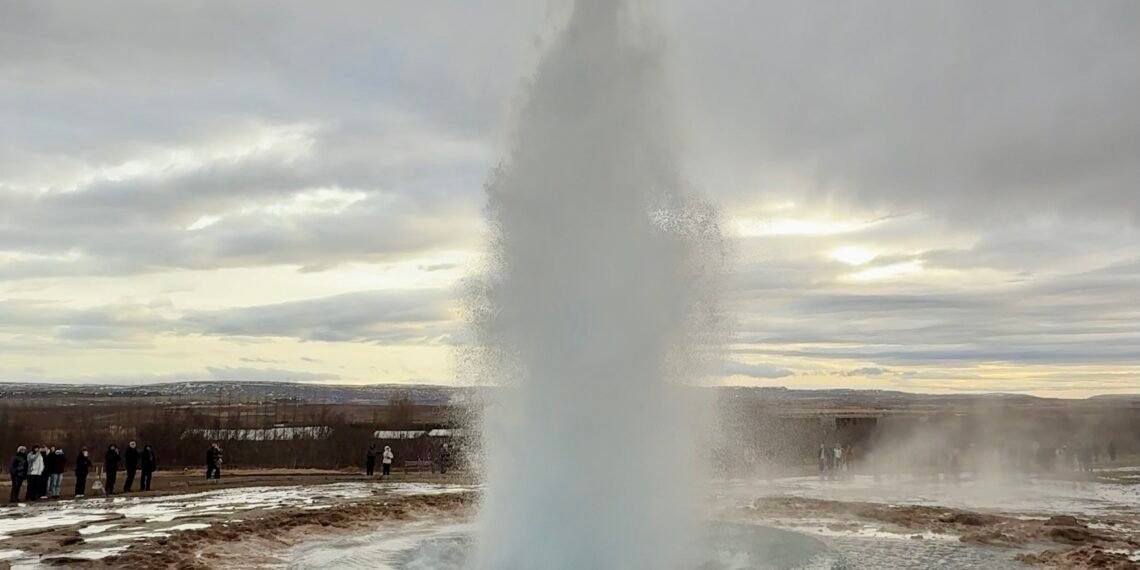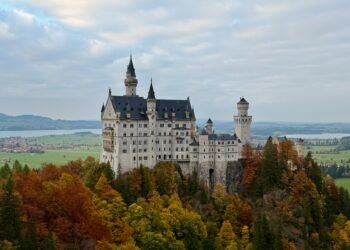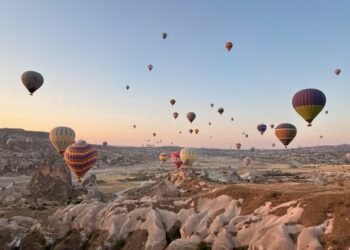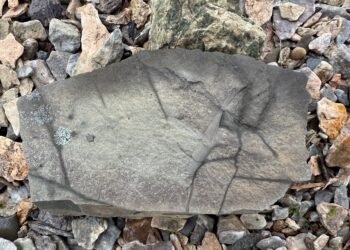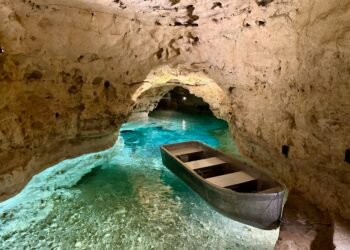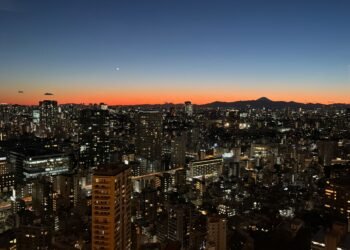Visiting Strokkur Geyser was one of the most captivating moments of my Icelandic adventure. Standing among steaming hot springs, waiting with anticipation for powerful eruptions, I was fascinated by the geological wonders beneath my feet. This experience not only deepened my appreciation of Earth’s dynamic processes but also reminded me why travel combined with curiosity makes for unforgettable journeys.
1 A Fiery Welcome to Iceland’s Geothermal Heart
It was February, and Iceland greeted me with crisp, cool air and dramatic skies. My five-day journey across this striking volcanic landscape began at CityHub Reykjavik – a sleek, modern, and budget-friendly capsule hotel situated perfectly near Reykjavik’s bustling waterfront, placing Iceland’s rich culture and natural attractions conveniently at my doorstep.
Early in the morning, I climbed into my rented car, eager to start the day’s adventure toward Strokkur geyser, one of Iceland’s most dramatic geothermal spectacles. Iceland’s weather added to the drama – vast expanses of snow-capped mountains loomed in the distance, their peaks cutting sharply through low-hanging clouds. Deep valleys and vast, grassy plains stretched endlessly, punctuated occasionally by clusters of hardy Icelandic sheep, indifferent to my passing vehicle.

My first stop was Þingvellir National Park, famous for its geological significance as a rift valley marking the meeting point of two colossal tectonic plates – the North American and Eurasian plates, steadily drifting apart at the mid-Atlantic ridge. It felt surreal knowing that right beneath my feet magma churned and welled up from deep within Earth’s mantle, reshaping the landscape as it had done for millions of years.
Leaving Þingvellir, I pressed on toward the day’s highlight: Strokkur Geyser, a geothermal marvel I’d never heard of before this trip, but was excited to discover. Driving toward the geyser, I pondered Iceland’s geothermal energy, amazed that beneath this rugged land, intense heat provides sustainable power for the entire country, perched precariously at the Arctic Circle’s edge.
2 Quick Facts About the Strokkur Geyser:
- Location: Haukadalur Valley, Iceland
- Eruption Frequency: Approximately every 5–10 minutes
- Height of Eruption: Up to 20–40 meters (65–130 feet)
- Water Temperature: Around 100°C (212°F) at eruption
- Geological Context: Situated on the mid-Atlantic ridge, where the Eurasian and North American tectonic plates meet
- Accessibility: Well-marked paths, parking, and a visitor center
3 First Impressions of Strokkur Geyser
Pulling into Strokkur’s spacious parking lot, I saw a flurry of tour buses, cars, and travelers eagerly congregating. The adjacent tourist information center buzzed with the energy of curious visitors from every corner of the globe. Crossing the road toward the geyser field, I was immediately met with plumes of steam billowing gently upward from countless springs scattered across the hillside. The pungent, unmistakable smell of sulfur lingered strongly in the crisp air – a vivid reminder of Earth’s volatile inner workings.
Walking along the well-trodden path, I stopped by the first bubbling hot spring, captivated by the rhythmic gurgling of boiling mud and steam rising like wispy ghosts into the cold sky. My curiosity surged – what immense geological processes were occurring beneath me, heating these waters so intensely?

Further down the trail, I encountered a more vigorous spring, continuously spurting water skyward and cloaked in thick steam. Upon closer inspection, I realized the spring’s rim wasn’t ordinary rock; it was actually layers upon layers of minerals deposited from millennia of mineral-rich waters solidifying and building up around the spring’s opening. My mind raced at the thought of geological timescales required to create such delicate yet rugged formations.
4 How Often Does Strokkur Erupt?
Strokkur Geyser’s eruption frequency is every 5–10 minutes, making it one of the most reliable geysers in the world. Each eruption shoots a column of steaming water from 20-40 metres (65-130 feet) into the sky, sometimes higher during especially forceful bursts.
This predictable rhythm is part of what makes Strokkur so popular with visitors. Unlike geysers that erupt only a few times a day, Strokkur rewards patience with a dramatic display every few minutes. As the pool begins to bubble and dome, anticipation builds until the water suddenly bursts upward – a spectacle that never looks quite the same twice.
I recommend staying for at least 3–4 eruptions. Not only does it improve your chances of catching a bigger plume, but it also makes it easier to photograph or film the eruption once you’ve seen the build-up sequence.
5 History of Strokkur Geyser
Strokkur Geyser has been erupting for centuries, but its activity has not always been as steady as it is today. Early accounts from the late 18th century mention Strokkur as part of the Haukadalur geothermal area, where several geysers, hot springs, and mud pots dot the valley.
Unlike the Great Geysir – the oldest known geyser in Europe, which lies just a short distance away, Strokkur has been the more reliable performer. Great Geysir would erupt spectacularly for centuries before falling largely dormant, while Strokkur kept erupting at shorter, more regular intervals.
In 1789, a powerful earthquake in southern Iceland temporarily disrupted the geothermal plumbing of the area, causing Strokkur to fall silent. For nearly a century, it remained inactive. Then, in 1896, another series of earthquakes reactivated the Strokkur Geyser, restoring its dramatic bursts of steam and water.
Today, the Strokkur Geyser continues to erupt with remarkable consistency, thanks to its deep geothermal conduit that channels superheated water from beneath Iceland’s crust. Its resilience has made it not only a natural wonder for travelers but also a symbol of Iceland’s dynamic and ever-changing volcanic landscape.
6 The Science Behind Iceland’s Hot Springs and Geysers:
The geothermal activity in Iceland is directly linked to the country’s unique position on the mid-Atlantic ridge, where the Eurasian and North American tectonic plates are slowly pulling apart. This geological rift allows magma to rise closer to the Earth’s surface, heating subterranean water trapped in porous rocks.
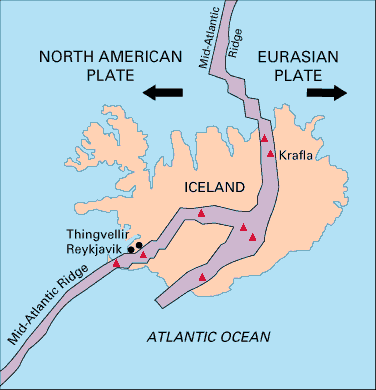
Geysers like Strokkur form in areas where the underground water is superheated by nearby magma chambers. The water, trapped in tight underground chambers, builds up immense pressure as it heats. Eventually, the pressure forces the water upward through narrow vents, releasing it explosively into the air. The cycle then repeats as more water seeps into the chamber and heats up again.

The Strokkur Geyser itself is known for its reliable eruptions, a result of its unique underground plumbing system. Unlike some dormant or irregular geysers, Strokkur consistently erupts because its water reservoirs are constantly replenished from below. The heated water quickly reaches boiling point, but the pressure from the cooler water above keeps it from turning to steam until the pressure becomes too great, causing the dramatic eruption.
Interestingly, geysers are rare on a global scale because they require a perfect combination of heat, water supply, and the right kind of underground plumbing. Iceland’s volcanic landscape creates these conditions naturally, making it one of the few places on Earth with numerous active geysers.
7 Awaiting the Big Moment
The excitement escalated as I approached Strokkur itself, the main event. A crowd circled the brilliant turquoise pool, their faces turned expectantly towards the water, cameras poised. I joined them, feeling a palpable tension mixed with collective anticipation. We waited, watching small bubbles breaking gently at the water’s surface.
After about five suspenseful minutes, the water suddenly receded slightly, as if inhaling deeply before the dramatic show. Then, without warning, the geyser exploded upwards, thrusting a towering column of boiling water and steam over 10 meters into the air. A collective gasp rose from the crowd, followed immediately by cheers and excited chatter. I was captivated, exhilarated by the raw, untamed power bursting forth from beneath Earth’s crust.
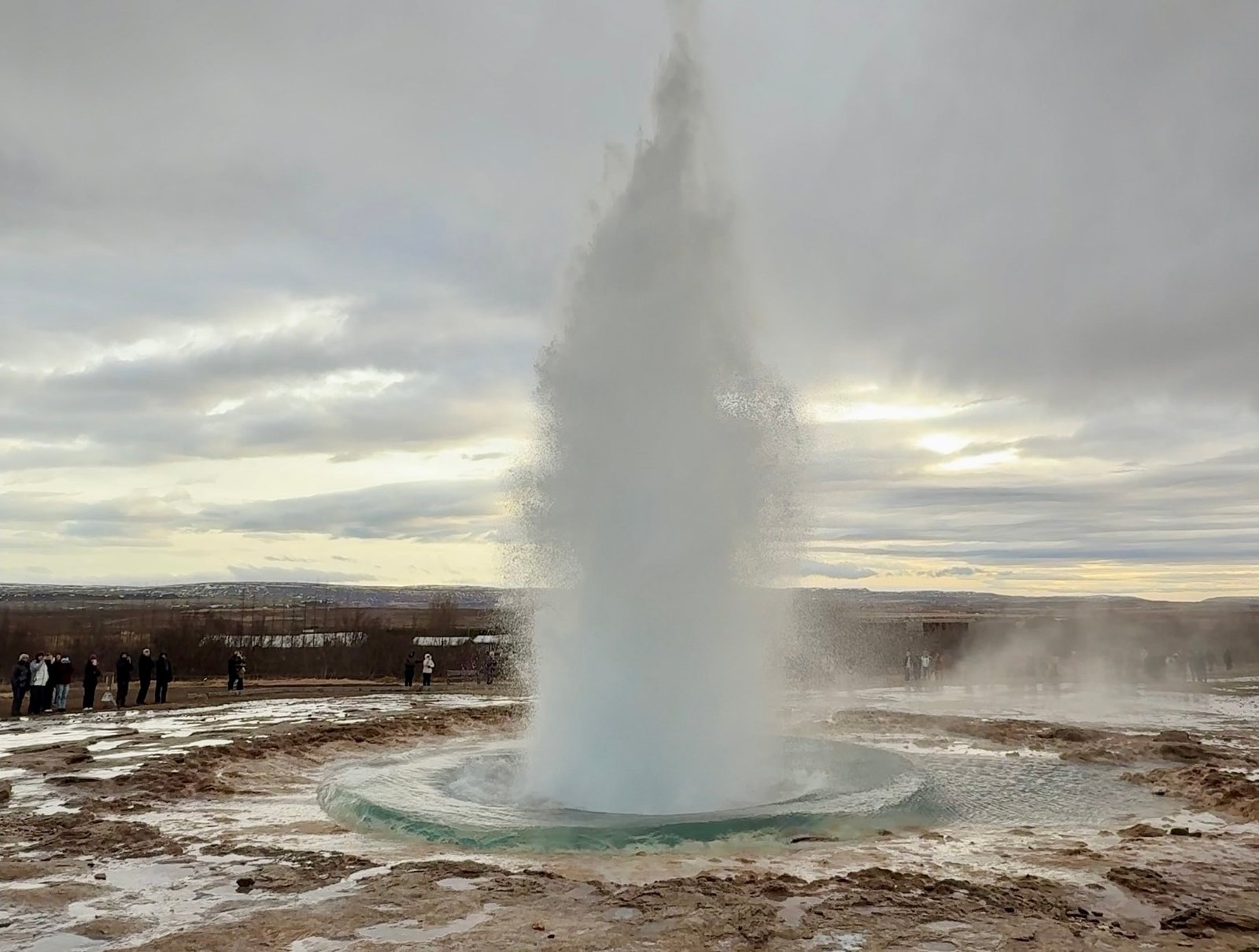
Now aware of Strokkur’s rhythm, I eagerly readied my iPhone to capture the spectacle once more. Precisely eight minutes later, another eruption surged upward, and I triumphantly recorded this astonishing natural event, savoring every thrilling second.
8 Wandering Further and Deeper Reflections
Beyond Strokkur lay a trail dotted with smaller, crystal-clear pools, each boiling vigorously, occasionally erupting in miniature bursts. Standing near them, I vividly imagined the subterranean magma chambers miles beneath my feet, heating water to boiling temperatures, and the countless hidden pathways through which this heated water surged upward.

As daylight waned, I returned to my car, profoundly moved by my close encounter with Earth’s incredible geological forces. Driving onwards toward my next destination, I felt deeply humbled and grateful, reflecting quietly on the privilege of experiencing such powerful natural wonders firsthand. Tomorrow, I would visit three of Iceland’s famous waterfalls – Seljalandsfoss, Skógafoss, and Gullfoss – and, even more exciting, the Sólheimajökull Glacier.
9 Practical Travel Tips
Here are some practical tips I learned during my visit to Strokkur Geyser to help you make the most of your experience, from timing your visit to staying comfortable in the geothermal area.
- Timing is Everything: Arrive early in the morning or late afternoon to avoid peak crowds.
- Gear Up: Dress warmly in layers and wear waterproof shoes to protect against spray.
- Stay Nearby: CityHub Reykjavik offers an ideal location for exploring Reykjavik’s attractions, while Hótel Eyjafjallajökull provides easy access to southern Iceland’s stunning sights.
- Camera Ready: Be patient. Eruptions typically occur every 8–10 minutes.
- Parking: Admission to the park is free, but there is a fee for parking. Make sure to pay at the designated machines.
10 Pro Tips for the Science Traveler
If you’re keen to dive into the science behind geyser eruptions and make the most of your observation at Strokkur, these expert tips will enhance your experience.
- Dive into Geology: Brush up on Iceland’s tectonic activity and volcanic geology to fully appreciate your experience.
- Visit Exhibits: Spend time at the information center for insightful geological exhibits.
- Bring Tools: Consider packing a thermometer or binoculars to enrich your scientific observations.
- Track Eruption Patterns: Keep a journal of eruption intervals and heights to observe any changes during your visit.
11 Final Thoughts
Iceland truly embodies its moniker – the land of fire and ice. Strokkur Geyser not only offers an astonishing natural spectacle but also a profound reminder of Earth’s restless energy, continuously shaping and reshaping our planet. Visiting this geothermal wonder was more than sightseeing, it was an encounter with the vivid, powerful forces that define our dynamic Earth.


